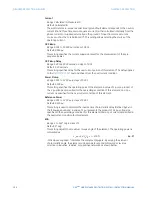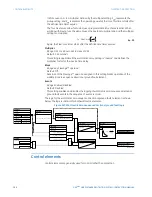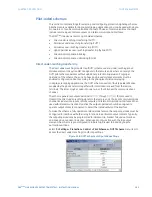
286
D90
PLUS
LINE DISTANCE PROTECTION SYSTEM – INSTRUCTION MANUAL
GROUPED PROTECTION ELEMENTS
CHAPTER 7: PROTECTION
Current
Range: Calculated IN, Measured IG
Default: Calculated IN
The wattmetric zero-sequence directional ground fault element responds to the neutral
current (that is, three times zero-sequence current), either calculated internally from the
phase currents or supplied externally via the ground CT input from more accurate
sources such as the core balanced CT. This setting allows selecting the source of the
operating current.
OC Pickup
Range: 0.002 to 30.000 pu in steps of 0.001
Default: 0.060 pu
This setting specifies the current supervision level for the measurement of the zero-
sequence power.
OC Pickup Delay
Range: 0.00 to 600.00 seconds in steps of 0.01
Default: 0.20 seconds
This setting specifies delay for the overcurrent portion of this element. The delay applies
to the
WATTMETRIC 1 PKP
operand driven from the overcurrent condition.
Power Pickup
Range: 0.001 to 1.200 pu in steps of 0.001
Default: 0.100 pu
This setting specifies the operating point of the element. A value of 1 pu is a product of
the 1 pu voltage as specified for the overvoltage condition of this element, and 1 pu
current as specified for the overcurrent condition of this element.
Reference Power
Range: 0.001 to 1.200 pu in steps of 0.001
Default: 0.500 pu
This setting is used to calculate the inverse time characteristic delay (defined by
S
ref
in
the following equations). A value of 1 pu represents the product of a 1 pu voltage (as
specified in the overvoltage condition for this element) and a 1 pu current (as specified in
the overcurrent condition for this element.
ECA
Range: 0 to 360° Lag in steps of 1
Default: 0° Lag
This setting adjusts the maximum torque angle of the element. The operating power is
calculated as:
Eq. 37
In the above equation, * indicates the complex conjugate. By varying the element
characteristic angle, the element can be made to respond to forward or reverse
direction in inductive, resistive, or capacitive networks as shown below.
6BRS 5H
î (&$
9 ,
Q Q
















































